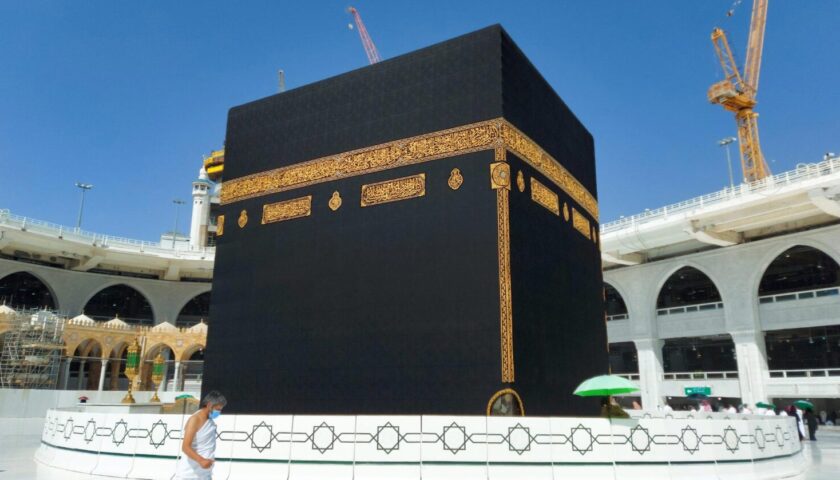Nestled in the heart of Venice, the Doge’s Palace stands as a testament to the grandeur and complexity of the Venetian Republic. This iconic edifice, located in the St. Mark’s Square, not only showcases the opulent architectural style of the Gothic period but also serves as a historical archive of Venice’s rich political and cultural heritage. As a symbol of Venetian power and prosperity, the Doge’s Palace played a pivotal role in shaping the city’s identity and legacy.
Historical Background
The origins of the Doge’s Palace date back to the early 9th century, though the current structure was primarily built and expanded from the 14th to the 16th centuries. Initially serving as a fortress and residence for the Doge, the elected ruler of Venice, the palace evolved into the epicenter of Venetian governance. Over centuries, it housed various governmental institutions, including the Great Council, the Senate, and the judiciary.
The Palace witnessed significant historical events, including the rise and fall of the Venetian Republic. Venice, a maritime powerhouse, was instrumental in trade between Europe and the Byzantine Empire, and later the Islamic world, leading to immense wealth and cultural exchange. This prosperity is reflected in the grandeur of the Doge’s Palace, which became a symbol of the city’s authority and artistic achievement.
Architectural Splendor
The Doge’s Palace is a paragon of Venetian Gothic architecture, a style characterized by its elaborate ornamentation, pointed arches, and extensive use of light. The palace’s façade, facing the lagoon, is particularly striking with its open loggias and intricate stonework.
The Facade and Exterior
The exterior of the palace is adorned with a harmonious blend of Gothic and Renaissance elements. The lower level features a series of pointed arches supported by slender columns, creating a sense of openness and lightness. Above this loggia, a more intricate arcade mirrors the design, with each arch containing a quatrefoil window, a hallmark of Gothic design.
The pink and white marble pattern on the façade adds to the palace’s visual appeal, creating a delicate interplay of color and light. Statues and reliefs, depicting allegorical and religious themes, enhance the grandeur. Notably, the “Porta della Carta,” the main entrance connecting the palace to St. Mark’s Basilica, is a masterpiece of Gothic sculpture. Designed by Bartolomeo Bon, it features elaborate carvings, including a statue of the Doge Francesco Foscari kneeling before the Lion of St. Mark.
The Courtyard and Interior
The inner courtyard of the Doge’s Palace is equally impressive, with its grand staircases and a blend of Gothic and Renaissance styles. The “Scala dei Giganti,” or Staircase of the Giants, serves as the grand entrance to the palace’s upper floors. Flanked by colossal statues of Mars and Neptune, symbolizing Venice’s power on land and sea, the staircase epitomizes the Republic’s glory.
Inside, the Doge’s Palace houses some of the most opulent rooms in Venice. The Great Council Chamber (Sala del Maggior Consiglio) is one of the largest rooms in Europe, adorned with gilded ceilings and massive paintings. The hall’s decoration was a collaborative effort by some of Venice’s greatest artists, including Tintoretto and Veronese. The “Paradise” by Tintoretto, behind the Doge’s throne, is one of the largest oil paintings in the world and depicts the heavenly reward awaiting the just.
Artistic and Cultural Significance
The Doge’s Palace is not merely an architectural marvel; it is also a repository of Venetian art and culture. The palace’s walls are adorned with works by the greatest Venetian painters, including Titian, Tintoretto, and Veronese, making it a veritable museum of Renaissance art.
Tintoretto and Veronese
Jacopo Tintoretto’s works are particularly prominent in the Doge’s Palace. His painting “Paradise” in the Great Council Chamber is a masterpiece of composition and detail, depicting over 500 figures in a celestial vision. Tintoretto’s dynamic style and dramatic use of light and shadow capture the viewer’s imagination, conveying both the grandeur of Venice and the heavenly aspirations of its leaders.
Paolo Veronese, another luminary of the Venetian Renaissance, contributed several works to the palace. His frescoes in the Hall of the College (Sala del Collegio) are renowned for their vivid color and intricate detail. Veronese’s ability to depict lavish textiles and opulent settings reflects the wealth and sophistication of the Venetian elite.
Political and Judicial Role
The Doge’s Palace was not only a residence and artistic center but also the nerve center of Venetian politics and justice. The complex housed the offices of the Doge, the Great Council, the Senate, and various judicial bodies, including the notorious Council of Ten.
The Great Council Chamber
The Great Council Chamber was the heart of Venetian political life. Here, the nobles of Venice gathered to debate and make decisions that shaped the Republic’s future. The hall’s grandeur reflects the importance of these assemblies, with its vast size and rich decoration underscoring the power and prestige of the Venetian state.
The Council of Ten
The Council of Ten, a secretive and powerful body, was responsible for state security and political espionage. Its meeting room, known as the “Chamber of the Inquisition,” is starkly different from the palace’s other opulent rooms. The dark wood paneling and simple furnishings create an atmosphere of severity and authority, befitting the council’s role in maintaining order and secrecy.
Decline and Restoration
The fall of the Venetian Republic in 1797 to Napoleon marked the end of the Doge’s Palace as a political center. The subsequent years saw the palace used for various administrative purposes, leading to periods of neglect and deterioration.
Efforts to restore and preserve the Doge’s Palace began in earnest in the 19th century. Today, the palace is a museum, open to the public, allowing visitors to explore its magnificent rooms and learn about the history of Venice. The preservation work continues to ensure that future generations can appreciate this jewel of Gothic architecture and its historical significance.
Conclusion
The Doge’s Palace is more than a historical building; it is a symbol of Venice’s enduring legacy. Its architectural beauty, artistic treasures, and historical importance make it a must-visit for anyone interested in the rich tapestry of Venetian history. As you walk through its grand halls and gaze upon its masterpieces, you are transported back to a time when Venice was a beacon of culture, power, and art. The Doge’s Palace stands as a testament to the ingenuity and grandeur of the Venetian Republic, a timeless monument to its illustrious past.



